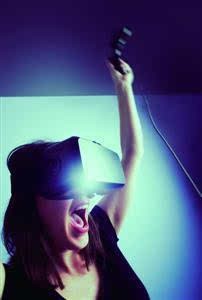With the appearance of Google Glass, in recent years, all kinds of wearable devices led by smart bracelets, watches, head-mounted displays and so on have quickly become "blushing", quietly changing our daily lives. But in the eyes of Professor Alex Pentland, the father of wearables and director of the Human Dynamics Laboratory at the Massachusetts Institute of Technology, existing wearables are far from ideal. When he first proposed the concept of "wearable device" 30 years ago and established the "wearable computing" project, he believes that wearable technology will play a huge role in the fields of medical health and urban management, not just People play game equipment and trackers while running. Misreading should not be just a cool "toy" Today's hot word "wearable device" was an unheard of concept 30 years ago, but one person, not only in the case of wireless networks, mobile handheld devices, etc., not only imagined such a wearable technology And in practice launched a project called "wearable computing." This person is Alex Pentland, director of the Human Dynamics Laboratory at the Massachusetts Institute of Technology. During his nearly 30-year coaching career, Pentland has trained more than 50 PhDs, half of whom have grown to be leaders in the field, one-quarter of them have become founders of startups, and another quarter People have become the backbone of related fields in the industry. His laboratory has so far incubated 30 high-tech companies. In 2011, Forbes selected Pentland as the world's big data authority, but his more widely known name is "the father of wearable devices." Scientists who later became famous in the field of wearable devices, such as the generation of electronic madman Steve Mann, and the developer of Google Glass, Sade Stara, are students of Pentland. In fact, in addition to Google Glass, Pentland also led the face recognition technology that is increasingly used today, as well as GPS-based positioning technology. Among Puntland's own wearables projects, the most striking feature is a wearable device called social measurement standards. This device is only a card size, equipped with a sensor that measures the movement of the wearer, a microphone that captures sound, Bluetooth that detects nearby devices, and an infrared sensor that records face-to-face communication. With the help of this device, Pentland has access to a wealth of information that far exceeds what the observer is saying. For example, when playing poker, 7 out of 10 times of this device can accurately determine whether someone is swindling at the table; can predict who is the winner in the negotiation period within 5 minutes, the correct rate is 87%; even in men and women When the lightning date has not started, it can accurately predict whether the appointment will succeed. By using social measurement signs in interpersonal interactions, Pentland can more clearly understand whether people are satisfied with their work and whether their work efficiency is efficient. As of 2013, dozens of research institutes and companies have used the equipment, including many of the world's top 500 companies. However, as the "father of wearable devices", Pentland is not satisfied with the current wearable products, he said more than once in public that he will not wear any wearable device, because the existing equipment is not Reach his ideal standard. In the eyes of Pentland, wearables are never cool toys. Because the core of wearable devices is access to data, as one of the global big data authorities, Pentland believes that wearable devices should be promoted in various fields such as medical care, finance, urban construction, and crime prediction. Such as the medical field. Future wearable devices should be able to monitor human condition at any time. People are sick when they go to the hospital, sometimes they miss the best treatment period. If there is equipment to send people's health data to the doctor at any time, then they can change the patient to find a doctor to find a patient for the doctor, and this is universal The aging society today is especially meaningful. However, the sensors of existing wearable devices can only obtain some simple physiological signals, and even the usual blood glucose indicators can not be achieved. In addition to early detection and early treatment, wearable devices are also of great value to the medical field to help doctors determine the type of disease. For example, fever, it is not enough to collect body temperature after the patient comes to the hospital, because there are more than 40,000 types of diseases that may be caused by fever symptoms. However, the various data of the human body measured continuously for a certain period of time can help doctors quickly judge whether it is Which of the more than 40,000 diseases. In addition, big data analysis is also of great value for the monitoring and prevention of infectious diseases. For example, by monitoring the behavior and location of people who have already developed the flu, and letting people know the real-time distribution of the flu population, people can effectively avoid contact with the flu patients and reduce the chance of being infected. In the financial sector, the business value of big data is more intuitive. Penglante envisages that by analyzing the consumption path of the bank card and the data of the consumption location, the chain store operator can know which stores can be merged, which stores need to be revoked, and which places need to open new stores. At the same time, using data analysis of consumer behavior habits, such as when people go to the supermarket, go to the gas station, pharmacy, flower shop, etc., the real estate industry can arrange which stores in the shopping center should be set together according to the data, which Should be separated. Nuts Seed Kernel include walnut kernel, sunflower seeds kernel, sunflower seed kernel etc., which are excellent food with rich nutrition. Seed Kernel,Kernel Fruit,Walnut Kernel,Pumpkin seed kernel, sunflower seed kernel Xi'an Gawen Biotechnology Co., Ltd , https://www.seoagolyn.com
